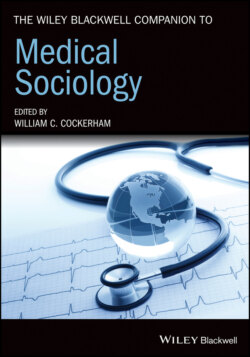Читать книгу The Wiley Blackwell Companion to Medical Sociology - Группа авторов - Страница 81
Flexible Immunity Bodies
ОглавлениеThe idea that contemporary societies are characterized by change and adaptability has also been articulated by Emily Martin (1994) in her empirical study of contemporary ideas about immunity in North America. By way of data collected via interviews, analyses of documents, participant observation, and informal exchanges, she (Martin 1994: xvii) found that “flexibility is an object of desire for nearly everyone’s personality, body and organization.” Flexibility is associated with the notion of the immune system which now underpins our thinking about the body, organizations, machines, politics, and so on. In her interviews with ordinary men and women, the idea of developing a strong immune system appeared to be in common currency. To be effective, that is to protect the body against the threats of disease and illness, the immune system must be able to change and constantly adapt.
These notions of immunity found on the street reflect those found in laboratory science where immunological understandings of immunity transformed from understanding of an immune “self” working to defend and discriminate against the foreign “non-self” (Tauber 1995). Tauber documents the fragmentation of the self-versus-non-self (S/NS) system, as immunological understandings of, for example autoimmunity, chimerism, transplantation and parasitism come to see the immune system reconfigured as an “immune-nervous system” with the creative capacity to be “over-written.”
Cohen (2009) in his book A Body Worth Defending finds congruence between judicial, political and biological cultures. Network conceptions of immunity displace bounded systems in all these spheres in ways that have led scholars to reflect on immune-political life (Davis et al. 2016) and the begin to forge a “biopolitics of immunity” (Brown and Nettleton 2018). Brown points to the merits of Italian philosopher Esposito’s (2008) notion of an “immunity paradigm” in which the political and biological become inextricably intertwined. While modernist notions of immunity implied enclosure, protection and defense, we now recognize that immunity also requires a degree of openness, “hospitable forms of immunity” that can “preserve life” (Esposito 2008: 53–54). Perhaps, the most readily obvious examples are organ transplantation and vaccination. The latter involving the introduction of a pathogen for individual and collective benefit, something Durkheim (1982) recognized when writing about how by inoculating ourselves with smallpox, where a vaccine increases our chances of survival through collective, herd immunity. The biopolitics of immunity are foregrounded in these and other immunological matters, for example debates on antibiotics and antimicrobial resistance are found to manifest as debates on public politics and personal responsibility (Brown and Nettleton 2017, 2018). What this scholarship offers is not only provides a valuable analysis of late modernity but also reveals how our accounts and interpretations of our bodies are historically and socially contingent, and that they are not “immune” from broader social transformations (see also the discussion about the work of Elias above). How we experience our bodies is invariably social, and one of the central thrusts of modern times is the sociology of the body that we feel compelled to work at creating a flexible and therefore adaptable and socially acceptable body.
